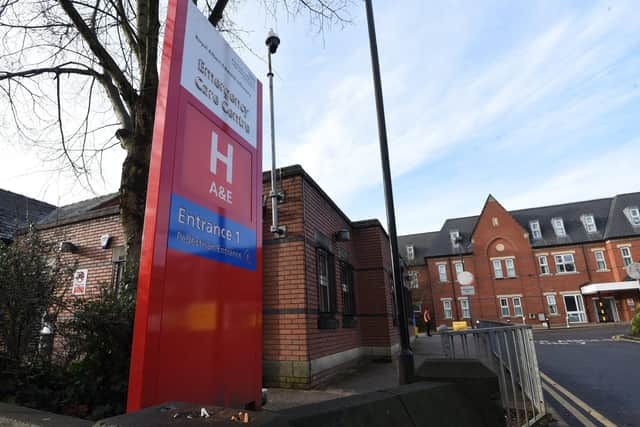The under-pressure Greater Manchester hospital with no beds left, according to latest NHS data
and live on Freeview channel 276
Greater Manchester hospitals remain dangerously busy as the NHS continues to experience severe winter pressure in England, the latest data shows. One trust in the city-region had no beds at all free for new patients in the week running from Boxing Day (26 December) to New Year’s Day (1 January), the figures from NHS England analysed by the data team at NationalWorld show.
And others were running above the 85% bed occupancy level which is considered to be safe and has been endorsed by the Royal College of Emergency Medicine (RCEM). The data shows nine in 10 hospital trusts in England were running above that level in the final week of 2022, with soaring levels of flu and Covid cases among the reasons the health service is feeling the strain,
Advertisement
Hide AdAdvertisement
Hide AdThe Government says it recognises the pressure the NHS is under and is ploughing billions of pounds into health and social care over the next couple of years, while health experts and organisations are warning the health service is alarmingly overstretched.
What does the data show for Greater Manchester?
The data shows that the NHS in Greater Manchester remains under pressure with hospitals extremely busy and in many cases above the safe occupancy level.
The most acute pressure over the festive period was felt at Wrightington, Wigan and Leigh (WWL) NHS Foundation Trust as it was completely full in the week up to 1 January, with an average bed occupancy of 100%. On average, every single one of the trust’s 382 acute and general beds were taken in the week between 26 December and 1 January.
Stockport NHS Foundation Trust had an average bed occupancy level of 97% for the latest week, while at Tameside and Glossop Integrated Care NHS Foundation Trust it was 95.2%.


Advertisement
Hide AdAdvertisement
Hide AdBolton NHS Foundation Trust, with an average bed occupancy of 91.4%, Manchester University NHS Foundation Trust, at 90.2%, and the Northern Care Alliance NHS Foundation Trust where an average of 87.3% of beds were occupied, were all above the 85% level endorsed by the RCEM. However, NHS England and NHS Improvement have previously suggested 92% should be considered the recommended safe limit for bed occupancy in winter. By that standard, only WWL, Stockport and Tameside and Glossop would have been classed as too full to be safe in the latest week of data.
Across England as a whole, an average of 93.2% of hospital beds were occupied between Boxing Day and New Year’s Day, above both bed occupancy safety levels which have been suggested.
What has been said about the figures?
Health think tank The Nuffield Trust chief executive Nigel Edwards said that “no health system should be running their hospitals this hot”. He suggested that the time of day when occupancy is recorded could mean that the level of overcrowding is actually understated in the figures.
“The lack of manoeuvre and available beds is leading to dangerously busy and difficult conditions in accident and emergency departments, waiting rooms and corridors,” Mr Edwards said.
Advertisement
Hide AdAdvertisement
Hide AdDr Ellen Welch, co-chair at the Doctors’ Association UK, also called for investment for the whole health and social care sector, which she said is “overstretched”.
A Department of Health and Social Care spokesperson said: “We recognise the pressures the NHS is facing following the impact of the pandemic and are working tirelessly to ensure people get the care they need, backed by up to £14.1 billion additional funding for health and social care over the next two years.
“This includes investing an additional £500 million to speed up the safe discharge of patients from hospital, creating the equivalent of 7,000 more beds nationally and establishing 24/7 data driven system control centres in every local area to manage demand and capacity.”
“There are record numbers of nurses and doctors working in the NHS – with almost 4,700 more doctors and over 10,500 more nurses compared to October 2021.”
